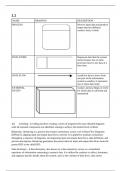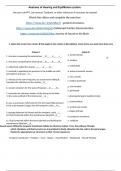Overig
ICT Assignment 3 solution
- Vak
- Instelling
ICT Assignment 3 solution Questions: Question 1 NB: When drawing data flow diagrams (DFDs), use the Gane and Sarson symbols/notation set. 1.1 Draw, name and describe the four symbols used in a data flow diagram (DFD). You may use a table to present your answer. (6) 1.2 Briefly describe the ...
[Meer zien]












